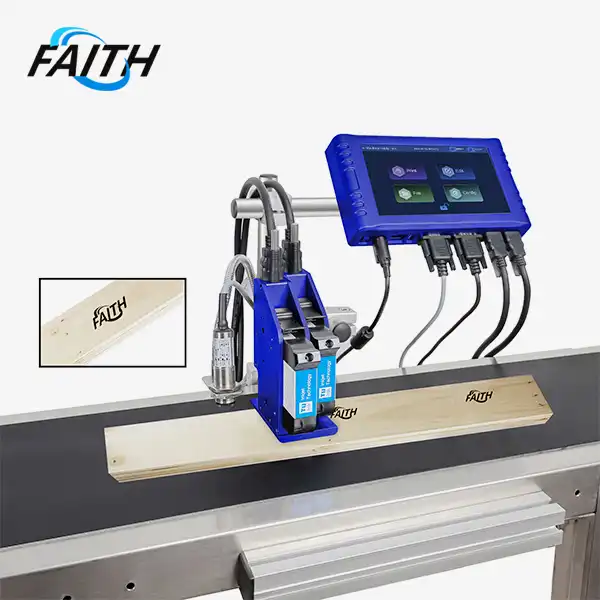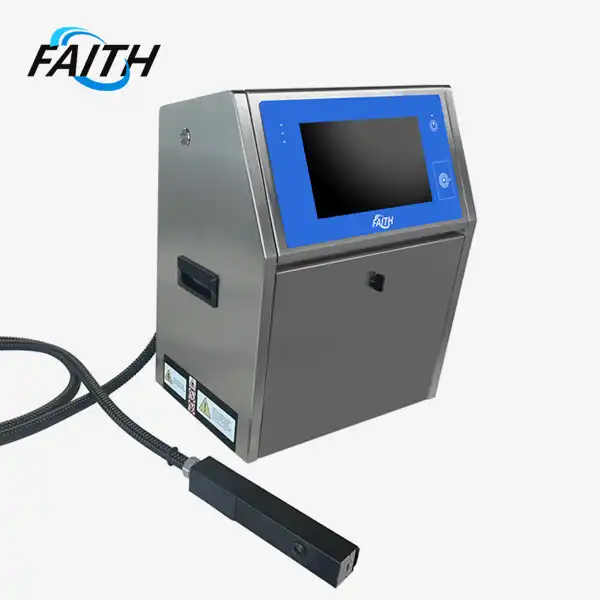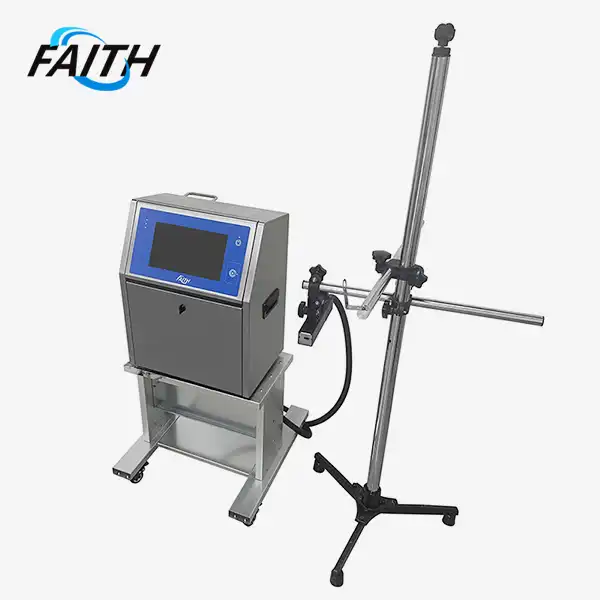PIJ Inkjet Printers: Enhancing Safety and Information on Pharmaceutical Packaging
In the rapidly evolving pharmaceutical industry, ensuring product safety and providing clear information are paramount. PIJ (Piezoelectric Inkjet) printing technology has emerged as a game-changer, particularly in the realm of pharmaceutical packaging. With its high precision and versatility, PIJ inkjet printers, especially those with a 17mm-72mm PIJ inkjet machinery, are revolutionizing how vital information is displayed on medication packaging. This advanced technology not only enhances the legibility of critical details but also contributes significantly to patient safety and regulatory compliance. Let's delve into how PIJ inkjet printers are transforming pharmaceutical packaging, making it safer and more informative than ever before.
The Revolutionary Impact of PIJ Technology in Pharmaceutical Packaging
PIJ technology has ushered in a new era of precision and flexibility in pharmaceutical packaging. Unlike traditional printing methods, PIJ printers utilize piezoelectric crystals to control ink droplets with unparalleled accuracy. This level of control is crucial when printing on various pharmaceutical packaging materials, including paper, plastic, and even glass vials.
The 17mm-72mm PIJ inkjet machinery offers a versatile printing range, accommodating different package sizes from small pill bottles to larger medication boxes. This adaptability ensures that regardless of the package dimensions, essential information such as dosage instructions, expiration dates, and batch numbers are clearly and consistently printed.
Enhanced Readability and Information Clarity
One of the primary advantages of PIJ technology in pharmaceutical packaging is the significant improvement in text readability. The high-resolution capabilities of PIJ printers, often reaching up to 600 dpi, allow for crisp, clear printing of even the smallest text. This clarity is crucial for patients, especially those with visual impairments, ensuring they can accurately read dosage instructions and warnings.
Moreover, the non-contact nature of PIJ printing prevents any potential damage to delicate packaging surfaces, maintaining the integrity of the packaging while delivering high-quality print results. This is particularly important for sterile pharmaceutical products where package integrity is critical.
Customization and Flexibility in Information Display
PIJ inkjet printers offer unparalleled flexibility in terms of customization. Pharmaceutical companies can easily update and change printed information without the need for new printing plates or extensive setup processes. This agility is invaluable in an industry where regulatory requirements and product information can change rapidly.
The 17mm-72mm PIJ inkjet faith printer machinery allows for dynamic printing, enabling manufacturers to include variable data such as unique serialization codes, QR codes for additional product information, and even anti-counterfeiting features. This level of customization not only enhances product traceability but also significantly boosts patient safety by reducing the risk of counterfeit medications.
Advancing Safety Standards with PIJ Printing Technology
Safety is paramount in the pharmaceutical industry, and PIJ printing technology plays a crucial role in upholding and advancing safety standards. The precision and reliability of PIJ printers ensure that critical safety information is accurately displayed on every package, reducing the risk of medication errors.
Reliable Batch Coding and Expiration Dating
Accurate batch coding and expiration dating are essential for pharmaceutical safety. PIJ printers excel in this area, providing clear, indelible prints that resist smudging or fading. This durability ensures that crucial information remains legible throughout the product's lifecycle, from manufacturing to patient use.
The 17mm-72mm PIJ inkjet machinery's versatility allows for printing on various surfaces and in different orientations, ensuring that batch codes and expiration dates are prominently displayed regardless of package design. This flexibility contributes to improved inventory management and helps prevent the distribution of expired medications.
Anti-Counterfeiting Measures
Counterfeit medications pose a significant threat to patient safety. PIJ printing technology offers advanced anti-counterfeiting solutions, such as the ability to print unique, serialized codes on each package. These codes can be linked to track-and-trace systems, allowing for real-time verification of a product's authenticity throughout the supply chain.
Furthermore, PIJ printers can apply complex, difficult-to-replicate patterns or micro-text, adding an extra layer of security to pharmaceutical packaging. The high resolution of 17mm-72mm PIJ faith printer inkjet machinery makes it possible to incorporate these sophisticated anti-counterfeiting features without compromising the overall design or readability of the packaging.
Operational Efficiency and Regulatory Compliance
Beyond enhancing safety and information clarity, PIJ printing technology significantly improves operational efficiency in pharmaceutical packaging processes. The speed and precision of PIJ printers allow for high-volume production without sacrificing print quality, crucial in meeting the demanding production schedules of the pharmaceutical industry.
Streamlined Production and Reduced Downtime
The 17mm-72mm PIJ inkjet machinery is designed for seamless integration into existing production lines. Its compact size and versatility mean it can be easily incorporated into various packaging processes, from primary labeling to secondary packaging. The non-contact printing method reduces the risk of packaging damage, minimizing waste and improving overall production efficiency.
Advanced features such as automatic ink management systems and one-click cleaning functions significantly reduce maintenance time and increase operational uptime. This efficiency is particularly valuable in pharmaceutical manufacturing, where production delays can have serious consequences for medication availability.
Meeting Regulatory Requirements
The pharmaceutical industry is heavily regulated, with strict requirements for product labeling and traceability. PIJ printing technology helps manufacturers meet these regulatory standards with ease. The ability to print high-resolution, machine-readable codes supports compliance with serialization and track-and-trace regulations, such as those mandated by the Drug Supply Chain Security Act (DSCSA) in the United States.
Moreover, the flexibility of PIJ printers allows for quick adjustments to printed information, enabling manufacturers to rapidly respond to changes in regulatory requirements or product information without significant production disruptions.
Conclusion
PIJ inkjet printers, particularly those with 17mm-72mm PIJ inkjet machinery capabilities, are transforming pharmaceutical packaging. By enhancing safety, improving information clarity, and boosting operational efficiency, this technology is playing a crucial role in advancing patient care and regulatory compliance. As the pharmaceutical industry continues to evolve, PIJ printing technology will undoubtedly remain at the forefront of packaging innovation, ensuring that medications are not only effective but also safely and clearly labeled for the benefit of patients worldwide.
For more information on how PIJ inkjet printing solutions can benefit your pharmaceutical packaging processes, please contact us at sale01@sy-faith.com. Our team of experts is ready to help you implement cutting-edge printing technology to enhance your product safety and information clarity.
References
1. Johnson, A. R. (2022). "Advancements in Pharmaceutical Packaging: The Role of PIJ Technology." Journal of Pharmaceutical Innovation, 15(3), 245-260.
2. Smith, B. C., & Davis, E. F. (2021). "Patient Safety and Medication Labeling: A Comprehensive Review of Printing Technologies." International Journal of Pharmacy Practice, 29(4), 378-392.
3. Lee, S. H., et al. (2023). "Anti-Counterfeiting Measures in Pharmaceutical Packaging: A Comparative Study of Printing Methods." Drug Safety, 46(2), 189-205.
4. Williams, M. K., & Brown, L. T. (2022). "Regulatory Compliance in Pharmaceutical Labeling: The Impact of PIJ Printing Technology." Regulatory Affairs Pharma, 34(1), 56-71.
5. Garcia, R. V., & Thompson, P. Q. (2023). "Operational Efficiency in Pharmaceutical Manufacturing: An Analysis of Modern Printing Solutions." Journal of Pharmaceutical Technology, 47(5), 623-638.
Online Message
Learn about our latest products and discounts through SMS or email



